From rags to riches: how a fruit stall selling boy became a brain surgeon and, inspired by the NHS, built a community hospital and neuroscience institute back in his homeland of Kolkata. We meet the President of India who opened the institute, and speak with the patients being treated there...
In this episode

00:00 - His Excellency the President
His Excellency the President
with His Excellency the President, Pranab Mukherjee
A grand opening of the 150 bed Institute of Neurosciences, Kolkata. 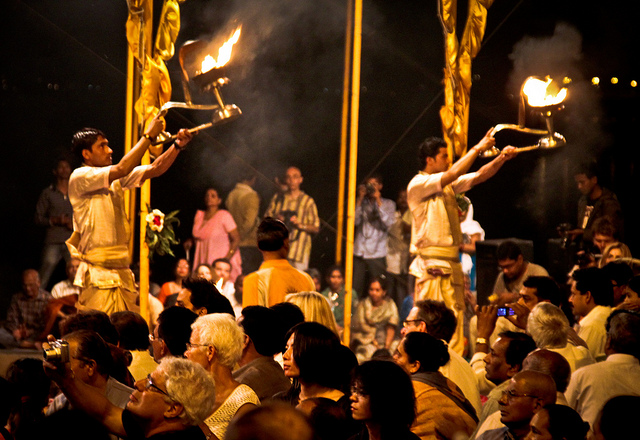
Hannah - First up, I arrived at the institute's 10-story, 150-bed hospital situated in Kolkata's equivalent to Mayfair London. Chaotic excitement permeated as the surrounding roads prepare to close in lieu of his Excellency, the President of India's imminent arrival to open the inaugural ceremony.
Male - Ladies and gentlemen, the honourable President of India, Pranab Mukherjee will now address the gallery.
Mukherjee - It's indeed a very happy occasion for me to inaugurate the Institute of Neurosciences, which is a state-of-the-art facility for Neurology, Neuro-surgery, Neuro-rehabilitation and Neuro-psychiatry. Distinguished guests, ladies and gentlemen, neuroscience is one of the important disciplines globally. About 1 million people are affected...
Hannah - The President emphasised the global impact of disorders of the nervous system, highlighting both the devastating personal and economic burdens of disorders such as Parkinson's, depression and epilepsy in India and across the globe. He stressed how dedicated research and care is necessary to help improve people's lives like the work occurring at this institute in Kolkata.
Mukherjee - I hope that your Institution would lead by example and infuse the higher objective of selfless service to society in the rest. I once again compliment everyone associated with this noble venture and wish them the very best for the future. Let me conclude in the words of Mahatma Gandhi:"A small body of determined spirits fired by an unquenchable faith in their mission can alter the course of history" Thank you, ladies and gentlemen.

03:46 - From Rags to Riches
From Rags to Riches
with Professor Robin Sengupta, Institute of Neurosciences, Kolkata
The story of an ambitious fruit stall boy who travelled the world, worked in brain surgery and then came home to India to set up a hospital!
The Institute treats over 100 people a day with patients travelling afar from Bangladesh, Afghanistan and across Bengal. The man who set the hospital up is Professor Robin Sengupta and I met him at his first workplace in a fruit stall in bustling bazaar.
Robin - When I was 9 or 10 years old, I did not have the means to go to the school. Our economic condition was so low that we had to find ourselves to try to make ends meet. My mother was struggling and we thought that we shall have to do a little bit our bits. So, in the market, just like him, I used to sell fruits. Come here.
Hannah - What's your name?
Male - My name is Mohammed Nasimudin.
Robin - And so, I was just like one of him. Of course, I was much younger than him because I was only 9 or 10-year-old. And then as soon as I got the opportunity, I moved upward and then I went to school, school to college, and college to - the rest would be history. In the beginning, this is what I had to do.
Hannah - How much do you earn each week?
Robin - (foreign language)
Male - (foreign language)
Robin - So, his own income is 500 or 600 rupees per day which is a very meagre salary.
Hannah - Would he be able to visit the hospital that you've setup?
Robin - Yeah. He will be able to visit. For them, 20% at very, very low cost to them and those who are extremely poor, we give them free service, free consultation, free managings once a month. And that is due and then whenever they come, they have got a very subsidised attention.
Hannah - Has your experience of working selling fruit when you were very young, has that made you build a hospital that then these people can now afford to go to?
Robin - Well, I was very ambitious and I wanted to be somebody. And then when my childhood was such that I can't forget these guys. So, this is the thing. So, I am to do something great but at the same time not forgetting these guys.
Hannah - And we'll continue to follow Robin's journey later in the show. But first, to find out more about his early years, I met his childhood friend.
Robin's childhood friend - Dr. Sengupta and myself, both of us came from same village of Bangladesh. His father was a homeopathic doctor but not so well to do. That's why in his childhood, I saw him selling banana and green vegetables in a local market. Since his father was not able to bring in lots of money, he was unable to give proper education even their clothing to his children. he used to come to school barefooted. Robin, he was not in a position to pay for his education. He could not attend school regularly but he used to collect school notes from other classmates. To sustain his livelihood, at that time, he started teach small boys just to earn his livelihood. He was good in all subjects. So, the thing is, his ambition was to be a doctor, that's why he got himself to medical college.
Hannah - So, even when he was very young, he had a vision that he would build a hospital?
Robin's childhood friend - It was his dream, it was his ambition from his childhood to be a doctor and to make a hospital to some of the people - poor people of our country.
Hannah - And we'll be discovering later Robin's experience during his 53 years working within the National Health Service in the UK.
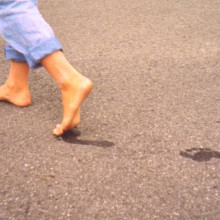
07:51 - Babu's mysterious medical case
Babu's mysterious medical case
with Babu, Boni, Dr Hrishikesh Kumar, Institute of Neurosciences Kolkata
Getting to grips with Babu's medical mystery by analysing his footprints....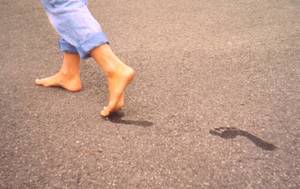
Each morning, the round meeting gathers doctors from across the hospital to brainstorm challenging cases. The meeting closes with all standing for the institute's Hippocratic oath blasting over the tannoy
Hypocratic oath - I will apply for the benefit of the sick all measures that are required, avoiding those twin traps of overtreatment and therapeutic nihilism. I will remember that there is art to medicine as well science and that warmth, sympathy, and understanding may outweigh the surgeon's knife or the chemist's drug. I will not be ashamed to say, "I know not", nor will I fail to call on my colleagues when the skills of another are needed for a patient's recovery.
Hannah - One of the cases presented was this boy.
Mohammed - My name is Mohammed Islam
Hannah - How old are you?
Mohammed - 12 years.
Hannah - How do you feel?
Interpreter - He says he's having a tremendous back pain that is causing his gait difficulty. He's unable to walk properly. He's unable to get up when he sits down. That's the main problem when he's sitting, he's unable to get up or when he's walking, he's having the back pain.
Hannah - To find out why Mohammed Islam who's also affectionately called (Babu) for short is experiencing these symptoms, I met with his attending doctor.
Kumar - I'm Hrishikesh Kumar head of neurology in Institute of Neurosciences Kolkata. Babu is a 12 years old male and he's following me definitely for the last 2 years.
A very strange case because he came with sudden onset: difficulty in walking and pain all over body. So, when you have such a case, you think of spinal cord disease because both limbs are not working properly. But when we examined the patient, the patient has a lot of symptoms but no sign. That means, while he was lying down, he could move his leg. So, quite intriguing. We did all the investigations that included MRI, blood test and they all were normal. We gave some medicine and they're very non-specific for pain and inflammatory, and he responded in a few days time. we were very happy that we missed some diagnosis but he is alright. A few months later, he came with similar problem and he has strange difficulty in walking. But what I noticed that when you give him a small push, he could maintain himself very well. He could maintain the balance.
Hannah - So, Babu went to visit Bonashee. She's a research assistant at the Neuroscience Institute Kolkata who's working on movement disorders.
Bonashee - Now, I'm just asking him to walk in support of the both hands and then I'll ask him to walk on the GAITRite.
Hannah - And the GAITRite is a mat that's probably about 6 inches long and it's got many sensors in it that can pick up the movements and the pressure that's being applied as the patient walks.
Bonashee - I'm asking him to walk on this GAITRite and he has to walk middle of this because these are sensors. So whenever he will be walking on this mat, his foot impressions will be recorded on the GAITRite machine so that we can record it and assess it.
Hannah - How many sensors are there within this 6-meter mat?
Bonashee - There are millions of sensors in the mat. So wherever he keeps his foot, the foot impression is captured. All the foot pressure, the length, the stride length, the step time - everything is captured from this GAITRite machine to the computer.
Female - 3, 4, 5, 6, 7, 8, 9, 10, 11, 12, 13, 14, 15, 16, 17...
Hannah - And with a bit of encouragement, Babu is able to walk across the centre mat and his footprints and the gait will have been measured whilst he's walking.
Bonashee - These are the temporal and spatial temporal parameters. Those are getting recorded from the foot impressions of this young boy.
Hannah - What will that information help to tell us?
Bonashee - This information, whenever he comes the next time, we can compare the foot faults and we can see what's the difference with the medication and we can say whether it is a psychogenic or something else.
Hannah - I went back to speak with Dr. Hrishikesh Kumar to find out what this gait walking test revealed about Babu
Kumar - You can call it magic carpet. This is about 20 feet long and 3 feet wide. It has thousands of sensors embedded in it. so, when a person walks on that, all the gait parameters, they're transmitted to the computer so you can see that recorded the speed gait, recorded the stride length - at what force the patient had put his one foot on the mat. The different parameters is a little technical like swing time, single support time. that means how long the right foot is on the ground. Double support time - how long both feet are on the ground. So, there are at least 20 parameters we can measure by that mat. This has been used in only 3 centres in India and a few centres all over the world. It can be used as walkway as a biomarker for different diseases.
What we are doing, is when we know that diagnosis of Parkinson's disease or when we know the diagnosis of say, stroke, we ask the patient to walk on that. We're collecting a huge number of data on the mat. We are seeing a very clear pattern that Parkinson's disease, they have different pattern. Those having only stroke, they have a different pattern. Another thing known as hydrocephalus - there's water in the brain - they also have walking difficulty and they have a different pattern. We can fix a pattern for each diagnosis. And then if we don't know the diagnosis, we ask the patient to walk on that and at least with the software, this can give the hint that it's Parkinson's disease or vascular parkinsonism or hydrocephalus and likewise.
For Babu, we asked him to walk on that because all the diseases, what we talked were Parkinson's disease, vascular Parkinsonism, spinal cord, myelopathy. They should have a constant pattern when they walk. In his case, what we saw, that he had walking difficulty but the pattern kept on changing. That was in favour of an non-organic - that means psychogenic disorder rather than organic disorder because any organic disorder, the pattern will remain same in all the walks.
In Babus case, it was different every time. so, that was the clue that he has psychogenic walking disorder rather than true walking disorder. That gave us an idea that something is wrong not physically - psychologically. So, we discussed the case with our psychiatrist.
Hannah - And so, Babu, his family and myself took a lift down to another ward since the doctors weren't sure if Babus symptoms were due to inflammation around his spinal cord or if it was an emotional reaction to stress. A psychiatric assessment was required.
P. Kumar - My name is Dr. Praveen Kumar. I'm a consultant child and adolescent psychiatrist.
Hannah - And you just spent the last hour speaking with Mohammed Islam and his nickname is Babu's family. And then also spending half an hour chatting with Babu himself. What did you find out during that consultation?
P. Kumar - First session, like I just tried to establish a rapport with the child. Okay, this is a case which is referred from a neurologist. They have investigated further on neurological diseases and they are suspecting there is some psychological component maybe associated with this child. I thought during the first session, okay, I'll be just establishing a rapport with the child. That means, just as you saw, like I asked about his positive things - what he likes to do or we talked about the activities he's good at.
Hannah - And you mentioned sports and then he got really stuck into some mathematical calculations that you laid out for him.
P. Kumar - He said like he's good at math, he's good at sports. Then when we appreciated him, he said that, "I got some certificate for some running race" in his school. So, this is the behaviour establish, a rapport with the child. Then you're going into deep and explore there. He shows other issues.
Hannah - During the meeting today with all the doctors, so this case was brought up that doctors needed to discuss in order to try and find out what the problem was, one of Babu's possible diagnosis could've been Munchausen's disease by proxy. Can you tell us a little bit about what that is and how you can diagnose it if it is the case for Babu?
P. Kumar - Munchausen syndrome is symptoms a child will present with some physical symptoms for which there are no physiological cause or no physical cause. When the child is doing these symptoms consciously then you say it's a Munchausen syndrome. Sometimes child may present with certain physical symptoms although child is not doing it voluntarily, these symptoms are created by the caregiver.
Hannah - So, maybe that the caregiver whether it's the brother or the father or the parents are stressed and then it's manifesting itself within Babu.
P. Kumar - Yeah, but we have to explore it. it's not clear like is it a Munchausen syndrome. Actually, in children, we say it's a kind of dissociation disorder, dissociation.
Hannah - And I left Dr. Praveen Kumar to answer his phone.
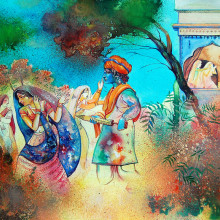
17:30 - Mental health stigma in India
Mental health stigma in India
with Institute of Neurosciences, Kolkata
How does mental health stigma in India compare to the UK? And do the class and 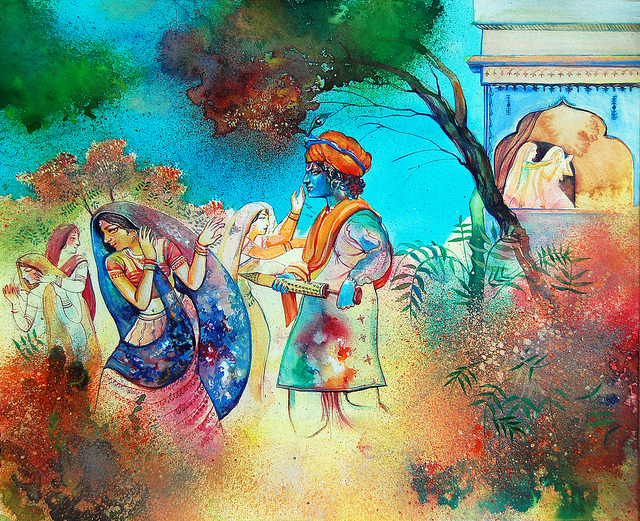 caste systems here affect treatments?
caste systems here affect treatments?
Before we return to find out about Babu's follow up the next day, I wanted to explore mental health stigma in India, to find out how it compared to the UK, and if class and caste systems here affect treatment.
Dutt - Alakananda Dutt. I'm a psychiatrist working in the Institute of Neurosciences Kolkata. Psychiatry is a problem that affects all classes of the society and we attend to almost all these psychiatric patients. But care-seeking attitude will depend upon the social class. For example, if you are from a lower socio-economic class and your main breadwinner is suffering from a psychiatric illness like say, depressive illness or Schizophrenia, they'll be more forthcoming and seeking treatment. Because once they get better, they can get back to work. Family is very supportive in these cases which is one of the main reasons why we have a very good outcome in psychotic illnesses in India in general. So, the family supports them through and through.
And now, it comes to the middle classes - they try to hide but again, when the dysfunction becomes very severe, they do come.
But it's the upper classes who are the main problem. They will continue to rationalise, use logical reasons for extreme severe cases. The Google has become a big problem. They seem to learn everything from the Google and after that it becomes difficult to treat but they tend to hide their symptoms but at times, they do end up in the psychiatry clinic.
Hannah - And how much does it cost if a patient that's in a lower income bracket and the reason that they're presenting themselves to you is because they need to go back work? How much will it cost for them to be treated by you?
Dutt - Actually over here, our consultation fees are fixed at around 1,000 rupees per consultation.
Hannah - So, 1,000 rupees would be the equivalent for maybe 6 months work for the average low income person.
Dutt - But they don't pay 1,000. Usually, what happens is they are given concessions. They either pay 100 or 500 rupees. So, that for them makes up and the medicines, we try to give them the low cost medicines because there are different pharmaceutical companies were available and some of them do make the medicines at a cheaper rate. So, we try to sort of prescribe that sort of medicines because in India, we do not prescribe generic names. We go by the pharmaceutical names in the prescriptions.
Hannah - So, in the UK for example, a pharmaceutical company might have the intellectual property for a drug and the GPs will prescribe that drug at a higher price. And then once that intellectual property has gone off license after about 15 years of patenting law and companies can develop cheaper alternatives that are based on that and you're prescribing those cheaper alternative?
Dutt - Yeah, we do that especially for the people who are poor, who cannot go for a more costlier drug, we have to do that. because most of these drugs are available in India at a cheaper price.
Hannah - So, those drugs that you're talking about for example are drugs that will help treat depression or treat Schizophrenia?
Dutt - Yeah. We are talking about those drugs. We use those drugs. Apart from that, we also use a lot of psychological treatment in our hospital because especially in depression, when we have mild or moderate depression, we can use cognitive behaviour therapy and a lot of help comes up out of helping the family to understand. They're usually very caring in India. The families are huge then you want to look after your parents, your siblings and they do go out of their way once they realise that they're really suffering from a serious illness, and their presence can make a difference. So, those factors also come in when we put some time in explaining to the family.
Hannah - Thanks to you, Alakananda Dutt.
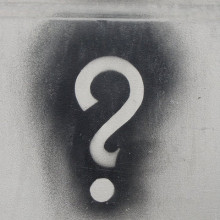
21:17 - All in the mind?
All in the mind?
with Dr Hrishikesh Kumar, Institute of Neurosciences, Kolkata
After neurological tests and psychiatric assesments, Babu's results are revealed 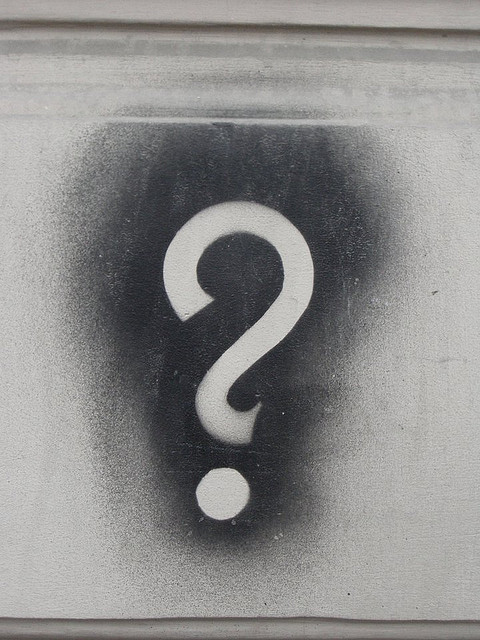 and his treatment advised...
and his treatment advised...
Kumar - What he has, we call it dissociative syndrome that this patient has the subconscious urge to be noticed, to get attention. And if he doesn't get then in subconscious mind, something happens, something changes and that is reflected as these symptoms - walking difficulty, pain all over the body. So in such cases, very difficult to treat the patient. What he'll work is proper counselling, for parents to understand that this is not a physical condition. They have to be patient and they have to undergo psychotherapy themselves and for the child. The problem is that his father and mother, his parents are very all protective. So, the smallest problem, they run for 500 kilometres and they come here. The child himself likes this. He likes their attention. He likes to come to Kolkata. He likes to be attended by the doctors. So, that is complicating their problem. So first thing, for the parents to understand that this is not a serious issue. If he has those symptoms, they should not take that seriously because we have seen we have done all the investigations. They themselves as the child should go regular psychotherapy.

22:36 - A way to relax in Kolkata
A way to relax in Kolkata
with Dr. Saptarshi Basu, Institute of Neurosciences, Kolkata
Braving the congested roads of Kolkata with an anesthetist, who took Hannah Critchlow to one  of his favourite spots in the city....
of his favourite spots in the city....
Basu - I'm Dr. Saptarshi Basu. I'm the intensivist and the critical care specialist at the Institute of Neurosciences Kolkata.
Hannah - And you brought me to this beautiful and very busy park in the middle of Kolkata. Can you describe the surroundings to our listeners?
Basu - Well, this is the Prinsep Ghat as we say. Just behind it is the second Hooghly Bridge and it's a park, nice place to be with a lot of greeneries and very busy part of the city. This is one of the places you must visit when you are in Kolkata.
Hannah - Dusk is just setting on Kolkata and there's lots of families running around, having picnics, playing games.
Basu - Yeah, they're playing badminton. The winter season in Kolkata is here and people are celebrating the winter. It's Saturday evening. You have many lover's point also here. People are making their girlfriends and boyfriends come here, take pictures and photographs. It's a nice place to be here.
Hannah - So, just to note that the winter in Kolkata - well, I'm wearing a short sleeve top and leggings and I'm actually quite warm. It's probably about 20 degrees here. It's lovely. Can you tell me a little bit about what made you start working at the Neuroscience Institute that Robin Sengupta set up?
Basu - Well, Professor Dr. Robin Sengupta is a father figure in neurosurgery. So, when he offered me the job, I couldn't say no to him.
Hannah - You've always lived in Kolkata?
Basu - I've been born in Kolkata and my studies are also here.
Hannah - What's it like? Can you describe a typical day for you working at the Neuroscience Institute in Kolkata?
Basu - Well, I'm an intensivist, so my job is to handle those critical patients who are there in the ventilators with a lot of emergency medical conditions coming in with the emergency department. So, I always have a very hectic day. You have to manage the patient and deal with those ventilator settings and at the end of the day, it feels really satisfied if I bring smile to the face of the family members of the patients who were admitted there.
Hannah - What kind of typical injuries are these people coming in with from having seen the traffic in Kolkata? Is it head injuries from traffic accidents?
Basu - Yeah. Definitely, we get a lot of trauma patients, road traffic accident patients. As you saw while travelling with me, that there were a lot of people who were just not very ignorant about their fact that they might injure their head and fall down. A lot of road traffic accidents, a lot of trauma cases with extradural hematoma, subdural hematoma, a lot of people coming in with neurosurgeries are needed. So, that is where we specialise a unique institute.
Hannah - And there's also lots of motor cyclists as well, weaving in and out of the traffic. I believe that there's been a new law passed within Kolkata to make sure that the majority of them at least are wearing helmets to protect their heads?
Basu - Yeah, very true. You need to wear the helmets and protect yourself first. Still, there are certain who would, I would still suggest to wear their helmets and protect themselves first.
Hannah - The dusk is really setting now here in the park and so, the bridge has just been lit up with some beautiful blue and yellow lights. I've got a couple of people that have come up to what's going on and what we're chatting about myself and Basu. Hello, who are you?
Female - Hello.
Hannah - And your name? And how old are you?
Female - 12.
Hannah - 12 years old?
Male - 11.
Hannah - What have you been up to today? Have you been playing in the park?
Female - (foreign language)
Basu - So, they're with their Auntie and roaming around. As I said, it's a festive season, so they're roaming around and having fun.
Female - I like very much Kolkata. Kolkata is a very beautiful places.
Hannah - Are you at school?
Basu - School.
Female - (foreign language)
Hannah - And what's your favourite subjects?
Female - Math, literature.
Hannah - Literature and math. Have you got a favourite poet or a favourite writer?
Female - Rabindranath Tagore
Basu - Rabindranath Tagore. He is a world famous poet. He has won a Nobel Prize for Gitanjali. In each phase of your life, we have this song. It's such beautiful songs.
Hannah - And you like maths and what do you think of this bridge here, this second Hooghly bridge? Do you think the maths, this trigonometry that have made the engineering possible are good?
Female - Very nice and good, triangle angle.
Hannah - Thanks to Saptarshi Basu and also to the Kolkata children who assured me that they do wear safety helmets when on their father's motorbike. Next up, we brave the traffic to return to the ward with Professor Robin Sengupta to visit a patient who hadn't faired so well on the streets.
Robin - He was knocked down by a 4-wheeler and he was unconscious for a short period of time. but he regained consciousness and then he was brought in here and these are the external injuries he had, so tomorrow he's going home.
Hannah - So, the right side of his face is very swollen and he's got very big bruise around his eye. What kind of treatment did he get when he came in here?
Robin - What he had, because he was unconscious, he had a scan, and to see, there is a slight contusion of the brain, but there is no big blood clot to operate on. contusion means that little bruising of the brain itself. So, I heard his condition did not deteriorate so we did not have to operate on him. These are taken care of by dressings, and he has had x-rays to see any fracture but he did not have any fracture, but you can see the black and blue he is. The boy can speak English. He goes to the local school. So, you can ask him questions.
Hannah - What's your name?
Stewart - Stewart
Hannah - And how old are you?
Stewart - 14 years.
Hannah - How are you feeling now? Can you remember being hit by the car?
Stewart - No.
Hannah - Completely gone, all the memory has gone.
Stewart - Yes.
Hannah - Are you feeling okay now?
Stewart - Yes.
Hannah - Are you going to go back to school next week?
Stewart - Yes. The exam is finished and that day I got accident.
Robin - The day his exam finished, that day, he had the accident.
Hannah - No celebration.
Stewart - No.
Hannah - Maybe celebrate when you're out and when you've fully recovered.
Stewart - Yes.
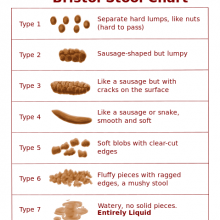
28:52 - A final dash home
A final dash home
with Dr Mark Baker, Dr Mark Cunningham, Newcastle University
The explosive incident that had Hannah laid up on a stretcher, with a scrubbed-up attending doctor, driving back to the hostel...
Picture a UK based travelling neurologist who, whilst preparing for patient duties, dons his best Del Monte-type beige suit and steps into a Kolkata taxi. Safety conscious, he duly straps himself in, only to discover the seatbelt is covered in black sooty grub. So, he swaps his dirty suit for scrubs at the hospital.
On our way back to the hospital that evening, no taxis are available, but behold! A kind of Neuroscience Institute Kolkata ambulance man offers to drop us off. Dr. Mark Cunningham and Dr. Mark Baker from Newcastle University explain the explosive incidents that had me laid upon a stretcher with a scrubbed-up attending doctor on our way home.
Mark - We were effectively blue lighted through the rush hour of Kolkata by one of the ambulances from the Institute of Neuroscience due to an urgent medical emergency which I'm sure may clinically qualify the colleague - Dr. Baker can expand on a little bit more.
Mark B - I think there's an important bit of background here and that is, we are day 4 into our visit to Kolkata and every one of our party has come down with gastroenteritis.
The person holding the microphone at the moment has come down particularly badly. Just at the moment we hit a solid wall of traffic in Kolkata, which is a difficult place to progress with festive times, driver duly turned on the siren, sensing that the back of his ambulance might be imminently soiled and miraculously, we made a half-hour journey into a 5-minute dash for the toilet. Is there anything you want to add to that Dr. Cunningham?
Mark - No. I think that's an excellent synopsis of the recent medical emergency.
Mark B - Not so much English patient. That's English impatient.
Hannah - And the sirens really did help us get back very swiftly so that I could visit the toilet.
What exactly was going on in my gut and in my immune system to cause this rapid evacuation and a rapid transportation back to the hostel?
Mark - My guess is that we have all picked up some kind of norovirus. Your gastric mucosa has presumably been hijacked by the viral pathogen, not absorbing the water. It's got to come out somewhere.
- Previous The Secrets of Sleep
- Next Is it tiring to dream you're awake?










Comments
Add a comment